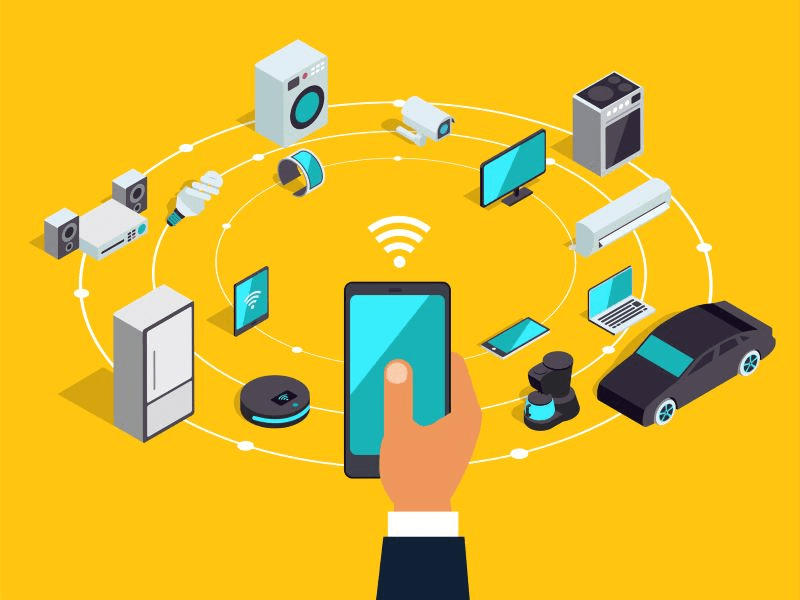
The Digital Doctor is In: AI and Telemedicine Redefine Healthcare
The healthcare industry is undergoing a seismic shift fueled by artificial intelligence (AI) and telemedicine.

The novel coronavirus pandemic in 2021 has quaked our lives and economy the entire year. All previous forecasts and predictions have been entirely purposeless. While several industries and tech giants have suffered from the current crisis, the IoT market has also been a victim of massive industry changes.
2020 may have made us hit rock bottom, but it has also been a year of significant changes. We need to accept changes and whatever is coming in the ways paved in the industry and our society. Newer and better benefits in terms of connectivity, IoT, and fancy digital technology appear on a regular basis, and that has changed the way we work, study, and perform our daily activities.
IoT has grown enormously in the last year, and it had been predicted that vehicles with V2V and V2X connectivity would be cruising the streets. But to state the obvious, the covid pandemic has pushed back most of the plans and ideas that were to be implemented. However, thanks to the fast-growing and ever-developing technology, we were able to handle the instabilities in the industry.
IoT has played a significant role in ensuring the global supply chain’s security and predictability— for essentials like food, medications, and vaccines.
Here are the five trends that could dominate the 2021 IoT market:
The disturbances in assembling, supply chains, support, and different activities brought about by the pandemic drive a more substantial interest in automation. While numerous businesses were in the beginning phases of industry 4.0 adoption in 2019, and ROI is still being determined, 2020’s crisis has shown the benefits of automation and faster digital transformation.
Robotics, machine learning, and remote maintenance are technologies that will experience a significant boost as companies will remain focused on reducing the need for operators on the factory floor. Like telemedicine, technologies like remote diagnostics and predictive maintenance would help keep industrial operations working smoothly with less manual intervention.
2. Renewed Interest for Private Networks
The usage of private cellular networks to deal with an increasing number of wireless IoT gadgets will continue. While there’s been a significant delay in conveying the infrastructure for those networks, the pandemic has spurred additional interest for secure connectivity and more privacy.
Government organizations, industries, and associations hope to secure their connectivity by introducing private cellular networks in their facilities. Also, low-power, wide-area (LPWAN) networks dependent on LoRaWAN and WiFi stand out enough to be noticed.
Both consumer-grade and clinically ensured wearable devices have just encountered a growing demand this year. There would be no distinction in the year 2021. Additionally, to minimize contact and maintain social distance, the need for remote health monitoring and telemedicine will help boost the adoption of more health-related sensors and other medically advanced technologies.
While we’ve already started vaccinations against COVID-19, it will be essential to keep the social distancing guidelines for most of 2021 and, in some cases, a part of 2022.
After the initial lockdowns in 2020, when employees who haven’t been involved in essential services return to their offices and factories, corporations and industries need to ensure their wellbeing and compliance with social distancing rules. Over the past months of the pandemic, many new devices and services are being used to help manage facilities, ensure worker distance, and proper cleaning and sanitation.
Quite recently, Ericsson reported that 5G networks cover around one billion people. The new cellular standard is relied upon to arrive at 40% of cellular memberships by 2025. Most of the 5G connections will be for critical IoT applications like remote surgery, industrial control, military operations, and so on.
The Integrated SIM (iSIM) technology will be one of the critical technologies to fuel massive industrial IoT adoption. This year (2021), essential IoT with cellular connectivity will expand to more than a billion devices, and it will continue to grow in double-digit percentages over the next five years.

The healthcare industry is undergoing a seismic shift fueled by artificial intelligence (AI) and telemedicine.

The healthcare and pharmaceutical sectors are navigating a transformative period, with technological advancements reshaping patient care, operational efficiencies, and strategic growth.

In the world of business, financial wizards wave their wands to conjure profits and success. But behind every great money magician …

Insurtech is not just making waves in the insurance industry—it’s rewriting the rulebook. As technology-driven startups disrupt …